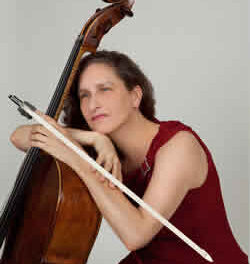The Brevard Philharmonic has made strides in the last year under the tutelage of Artistic Director and Conductor Donald Portnoy. A large audience in the Porter Center heard a very interesting concert of nineteenth-century works including two seldom-played compositions and a familiar Beethoven symphony. As in past concerts, Portnoy stretched the players somewhat but did not overwhelm them with the programming.
Juan Crisóstomo Arriaga (1806-1826) had a sadly abbreviated life, but as a child prodigy was nicknamed the “Spanish Mozart.” His Overture to “Los esclavos felices” is a medley based on arias and other material from his opera of that name, composed when he was thirteen years old. The complete score is lost. Arriaga uses French horns very well in the work, with nice interior passages on flute and clarinet and good countermelodies in the cellos. The Brevard Philharmonic violins had difficulty keeping together during a lively theme early in the overture, smearing the sound during fast runs. They got their sense of ensemble together in the charming middle section, but again demonstrated some intonation problems as the overture concluded.
Joseph Rheinberger (1839-1901) was born in Liechtenstein and had a successful career in Germany as an organist, teacher and prolific composer. He is now remembered primarily for his organ sonatas and organ concertos. Charlie Steele of Brevard was soloist in Rheinberger’s Organ Concerto No. 2, using the Porter Center’s fine Jaeckel tracker organ, varying his registration and loudness in order to fulfill the composer’s intention to have two clear roles for the organ, sometimes a contrasting solo voice and other times a supporting role adding color to the orchestral passages. Steele tackled the work with authority. For the most part, the orchestra successfully accompanied him. In some parts of the slow second movement, the players were “playing notes” rather than sustaining the sense of complete phrases, and someone in the horn section (not first horn) had intonation problems. Portnoy elected a walking tempo in the third movement, and at times the strings plodded instead of walked. But for an orchestra meeting a work for the first time, they did quite well.
They did even better after intermission, when Beethoven’s Symphony No. 7 was performed. Every musician on stage knew and loved the piece, and I sensed that even the back desk amateur players had probably played it at some previous time in their life. There were only minor things to question in what was a very good performance. Again there were horn intonation problems, and the challenging tempos of the third and fourth movements left some players at the edge of their comfort level if not their ability.
Portnoy’s podium style included a clear beat, indicating some detailed subdivisions that might not be needed by a fully professional orchestra. He provided prolific cues to ensure that there are no avoidable errors. He beat time in the concerto even during solo organ passages, so that there would be no mistake about the orchestral entries. Portnoy has a fine reputation as a “teaching” conductor, which is just what this orchestra, which mixes seasoned professionals with avid amateurs, needs. He appears to have used the last year in rehearsals with this ensemble to good effect. They are more disciplined and more focused now than in 2007 when he began his tenure with the group. I predict continued improvement for the Brevard Philharmonic so long as they continue to listen to Maestro.











